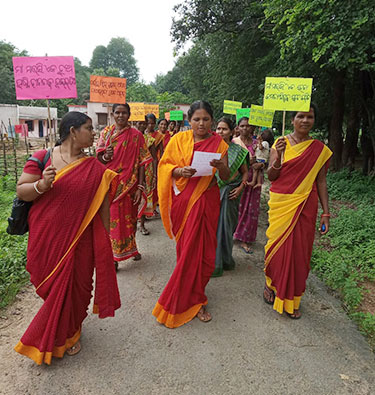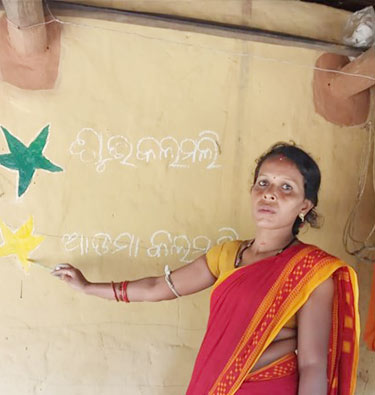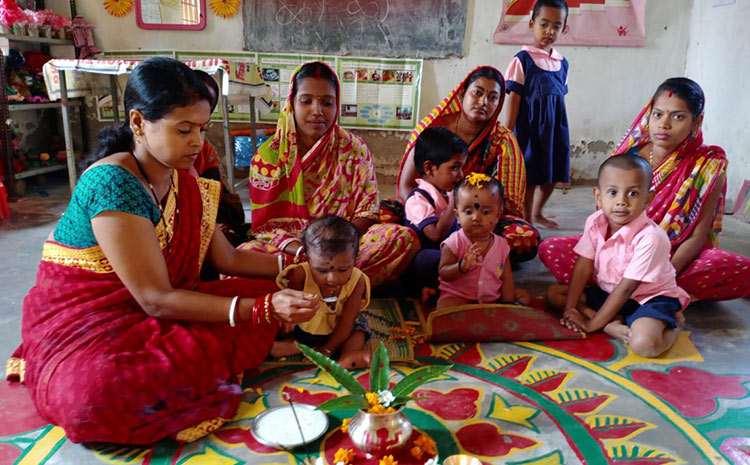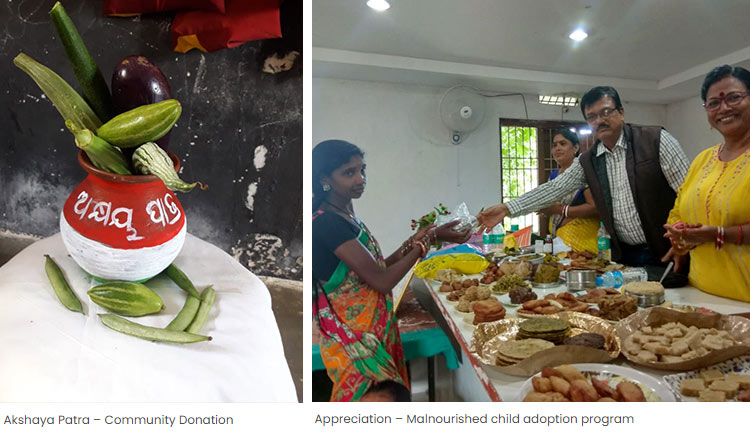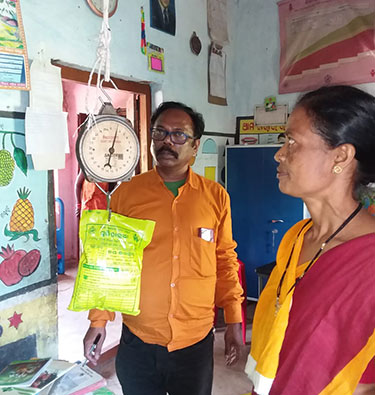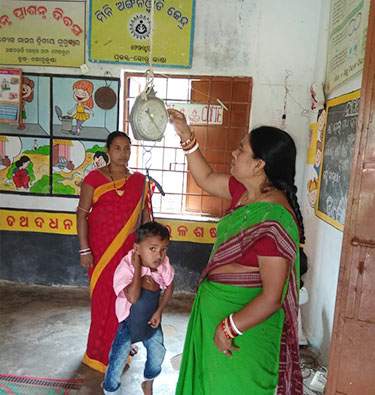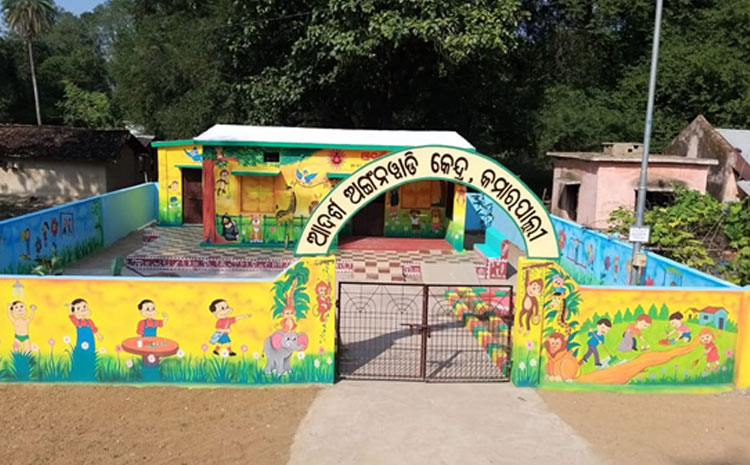
Model Anganwadi centre at Kamarpalli
Anganwadi Centers (AWCs) are robust platforms for service delivery in community health and nutrition at the grassroots level. AWCs are community spaces that lay a strong foundation for the child’s psychological, physical, and social development. The Anganwadi centers’ service delivery depends upon Community Involvement, followed by the infrastructure availability and the capacity of Anganwadi workers. The Malkangiri district administration worked on these three factors in transforming the Anganwadi system and delivering the health, nutrition, and preschool services to more than 60,000 children of age group 0-6 years, adolescent girls, lactating mothers, and pregnant women with community ownership.
Malkangiri District has 1250 Anganwadi centers, out of which 1241 have their own buildings. Before starting the programme, Most of the Anganwadi centers had poor Infrastructure buildings like leaking roofs, lack of playgrounds, lack of toilets, and even no electric connection. The percentage of malnourished children was around 22%.
A committee was formed, constituting mainly mothers to monitor the activities and create awareness, but the committee wasn’t functional. The Anganwadi workers were not aware of the importance of their work. From the analysis of ICDS monthly data, it was found that more than 15,000 children were malnourished under the age group of 6 years. During the field visits, it was noticed that many AWC’s were unhygienic and also unsafe for children. The “Take Home Ration” prepared for pregnant women, lactating mothers, and children were supplied by various SHG groups. These preparation centers were not maintaining any safety and hygienic procedures.
After rigorous analysis and field visits, the District Administration brought it upon as a priority task to transform the Anganwadi Centres. The various challenges and solutions were discussed in multiple brainstorming sessions, which led to the initiation of the “Transformation of Anganwadis in Malkangiri.” This initiative was launched in October 2018. The broad vision was to transform the Anganwadi’s of the district, with the following key objectives:
- Upgradation of Infrastructure
- Capacity Development
- Involvement of Community, and
- Strengthening of supervision & support
Upgradation of Infrastructure:
District Administration selected 50 Anganwadi centers (one from each sector) for redevelopment and up-gradation under this initiative using the SCA (Special Central Assistance Funds) in all 7 blocks. These 50 Anganwadi centers were equipped with interactive and child-friendly learning spaces. The children were provided with world-class preschool infrastructure and toys. Localized BALA paintings, essential nutrition-related measurement equipment, and a kitchen garden with wired fencing were put in place.
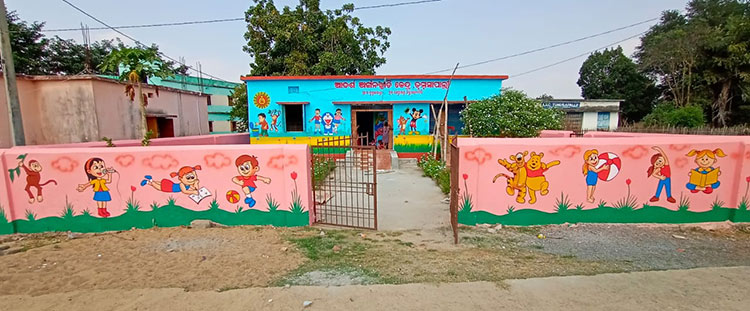
Model Anganwadi centre at Tumasapalli
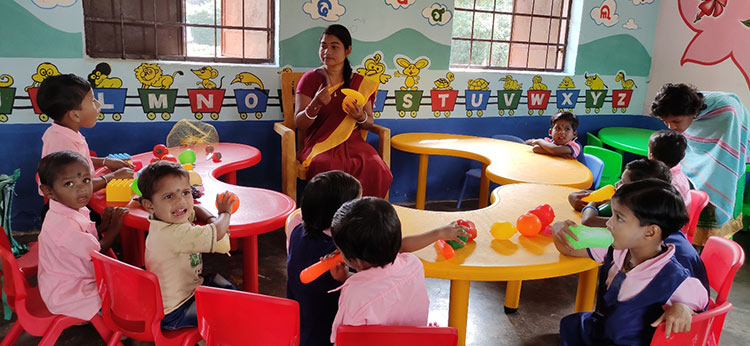
Preschool activities at Model Anganwadi Centre – Malkangiri
Capacity Development :
Anganwadi workers, helpers, and supervisors from the selected 50 Anganwadi centers were trained to create a new and innovative environment in their Anganwadi centers. Anganwadi workers were provided with hands-on training on early childhood education, effective sanitation & hygiene, and also on the collection of nutrition & health-related data from the ground. These trainings were conducted at the district, block, and sector levels.
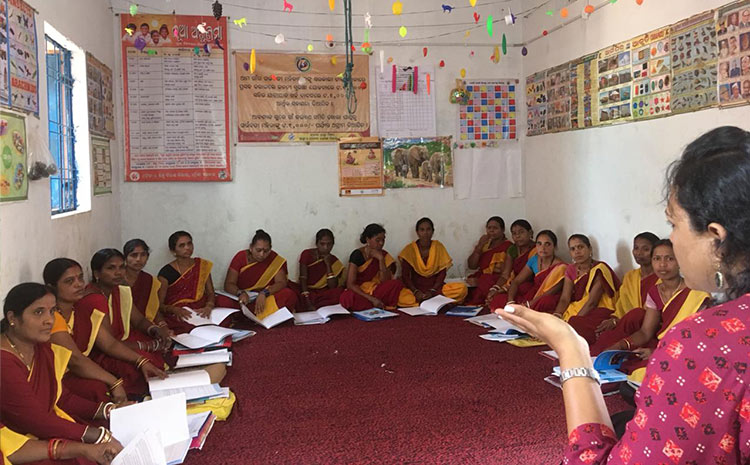
Capacity Development of Anganwadi Workers
Involvement of Community
An innovative community engagement programme, ‘Ama Sisu Sustha Sisu,’ was initiated. Through this programme, committees constituting mothers were created. They were empowered with training, creative community engagement activities like healthy mothers adopting a malnourished child to promote a peer learning environment among the community, regular celebration of the Annaprasana Diwas, Sabuja Diwas, Ankur Diwas, Shishu mela, and nutrition mela. Special meetings were conducted in every Village with women SHG leaders, Village heads, Parents of the children enrolled in AWC, and ward members to create awareness about personal and social sanitation, daily nutrition intake, etc.. Healthy mothers, WSHG leaders were encouraged to adopt a malnourished child and closely monitor their food habits, daily intake, hygiene maintenance, and personal care. They were also counselling the parents regularly.


